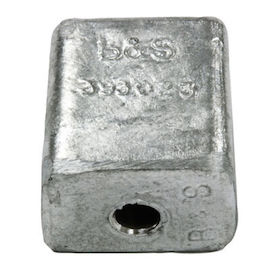
Curated with aloha by
Ted Mooney, P.E. RET

The authoritative public forum
for Metal Finishing 1989-2025

-----
NEED HELP! another science project kid.
Hello, so I have a few questions I was hoping a professional could answer swiftly. For an A on this assignment we need to interview a professional.
After seeing the science project idea on "how electroplating works" page, I decided to try it for my project. My group and myself followed the instructions void of cleaning the penny well with a tooth brush. We just had a very new penny and thought it was clean enough. Well what resulted from trying to plate a penny wih Zinc using a battery and other materials suggested on the page, was that a black coating that was very flaking showed up on the penny. also looked like there were some slight gold colored bubbly areas right under the clumpy black coating. Also we were wondering why it took several hours to see results once put in the vinegar
⇦in bulk on
eBay
or
Amazon [affil links] /water bath.
Any clarification on these questions and our methods would be greatly appreciated.
high school chem - California
June 1, 2008
Hi, Troy. More is expected of high schoolers than of elementary schoolers, and for an "A" you may be expected to re-run the experiment right :-)
The electroplated metal metallurgically grows onto the metal of the substrate. So the penny you are plating onto must be absolutely clean; you can't electroplate onto a film of oil. Since you're in high school, use pumice ⇦ this on eBay or Amazon [affil links] instead of toothpaste -- pumice is a "real" cleaner actually used in industry -- and wear plastic gloves ⇦ this on eBay or Amazon [affil links] .
The black smut is from too much current flowing with too little zinc in solution. So don't use more than a 1-1/2 volt battery, don't place the penny almost touching the anode, and try no epsom salt or very little. What did you use for your zinc anode? Is there evidence that it is dissolving into the solution as it must if you expect to plate zinc out of the solution?
Yes, the plating takes a long time. That is because you can't plate zinc out of solution if it isn't in the solution, and with such a mild acid as vinegar, you just can't get much zinc into solution very fast. Good luck and come back and tell us about your "A".
Regards,

Ted Mooney, P.E.
Striving to live Aloha
finishing.com - Pine Beach, New Jersey
![]() Thank you Mr. Mooney. I totally agree we should do it again but for the sake of time that is not possible. but I did enjoy seeing someone other than a high school student like myself use a happy face! ;-) haha. Thank you very much for your time, and answer. %) $)
Thank you Mr. Mooney. I totally agree we should do it again but for the sake of time that is not possible. but I did enjoy seeing someone other than a high school student like myself use a happy face! ;-) haha. Thank you very much for your time, and answer. %) $)
- California
Q, A, or Comment on THIS thread -or- Start a NEW Thread
